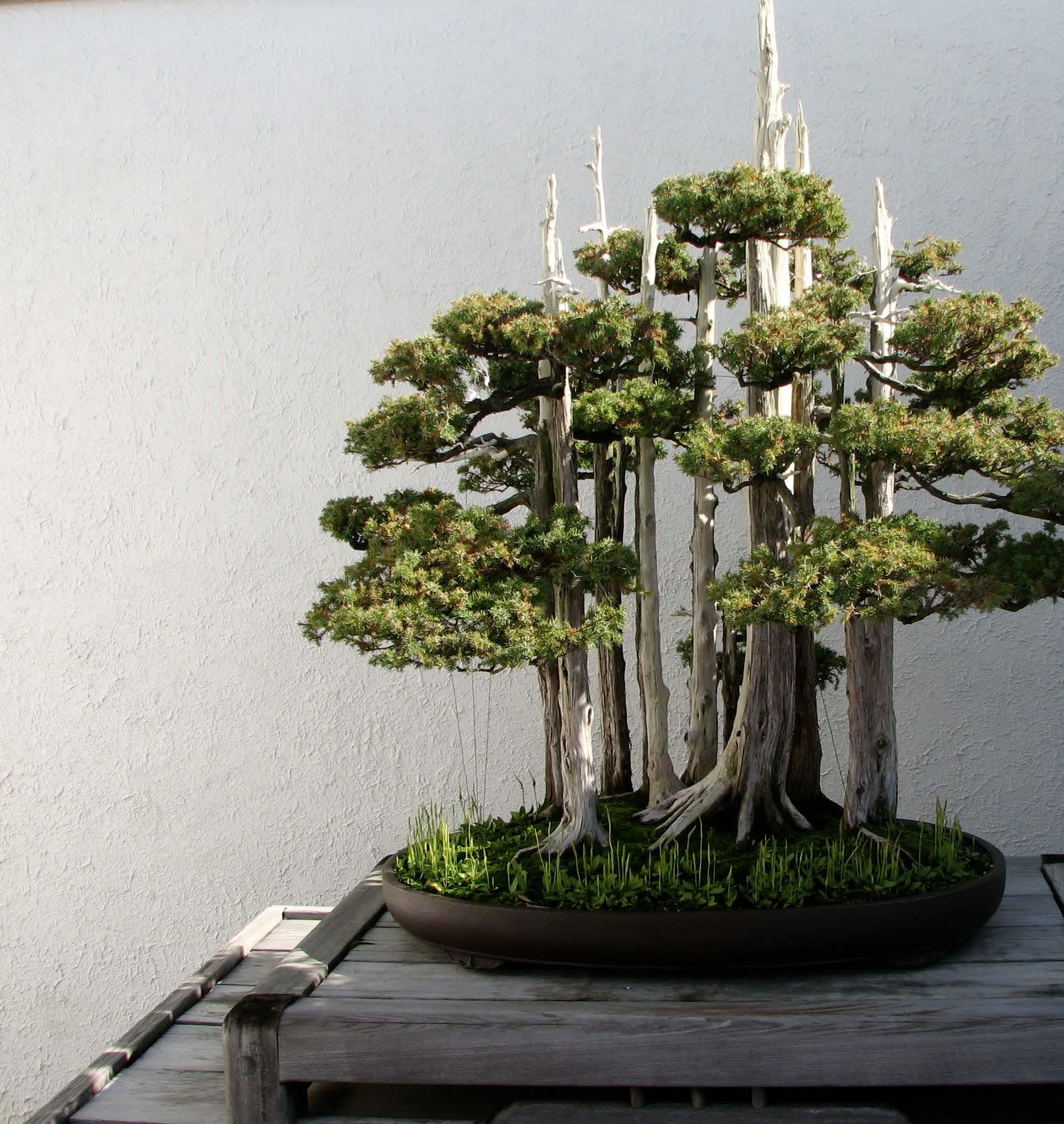
17 minute read
BONSAI BOB
By Jason Van Dyke, PM (Managing Editor)
In 1625 A.D., just a year after King James I created the royal colony of Virginia and nine years after the reunification of Japan under the famous Shogun (military dictator) Tokugawa Ieyasu, a simple tree was planted in a Japanese nursery. Hundreds of years later, that simple tree would unite two vastly different cultures in two vastly different events, and a D.C. Grand Master would play an integral role in one of them.
Advertisement
Orphaned at the age of two, Robert Drechsler was born on April 9, 1933, in the Anacostia neighborhood of Washington, DC. He was raised in the German Orphan Home, along with several other of his nine brothers and sisters. While being orphaned at such a young age was, in his words, “not ideal,” his new home was far from the Dickensian prison we might equate with orphanages. In fact, he and his siblings were lovingly cared for at the home, and it was in their garden in front of the house that Bob first fell in love with plants.
He remembers those days in the garden most fondly. While they grew tomatoes and other food for the home as a practicality, they also planted flowers and trees to landscape the yard. In the garden he was taught how to care for and nurture plants, and it was an activity that gave him great joy and solace as he watched the crops he was responsible for thrive. It would become his first love, in fact.
After graduating Anacostia High School, he attended the University of Maryland, where he studied Floriculture. During high school and college, he was an active member of DeMolay, and in early June of 1954, two short months after his twenty-first birthday, he was initiated an Entered Apprentice Mason in his local Lodge — Anacostia Lodge No. 21. Two years later in 1956, he graduated from the University of Maryland with his Bachelor of Arts degree in Floriculture. Then in 1957, he was drafted into the Army.
While his aptitude tests directed him towards Intelligence as a cryptographer and signals officer, it was his demonstrated aptitude on the clarinet (an instrument he played through high school and college) that earned him a place in an Army Band, instead. He was stationed in Atlanta and got to march in several major parades and celebrations. (After moving back to DC late in his Army career, he marched in the inauguration of JFK—a highlight of Bob’s time in the band, and one of his favorite memories.)
In 1959, Bob was transitioned into the “Active Reserves” of the Army and made a short attempt at graduate school, which didn’t suit him. Instead, he went to work for the National Arboretum as a Biological Aide. This allowed him to continue his work in the garden, but this time he could make a career out of the work.
Bob’s first years at the National Arboretum were slow. He researched ornamental shrubs, which consisted of long, lonely days in a lab, repeatedly splicing and breeding various plant specimens. But while for others the work was tedious and boring, Bob discovered he possessed a unique knack for this type of work. The solitary nature of the lab never really

Bob and three of his brothers on the steps of the German Orphan Home

1957 - Ft. Jackson SC 3rd Army Band
bothered him. In fact, he found he had the patience and perseverance to block out any distractions around him and focus on the work at hand. Unbeknownst to Bob, it was a skill set that that closely matched one of the world’s oldest botanical artforms — the Japanese art of bonsai.
A NATIONAL IDENTITY IN MINIATURE
For those familiar with James Clavell’s novel and subsequent miniseries Shōgun, the beginning of the Edo Period in feudal Japan (1603–1868) is one of the most romantic periods in Japanese history. And while Europe was in the middle of its Renaissance period, Japan was flourishing as a regional power. The samurai of this time (Japan’s warrior class and highest caste) and their chivalric code of Bushidō, ruled over a remarkably structured and disciplined civilization.
Bushidō (“the way of the warriors”), was a collection of moral and social rules-of-conduct that defined the ideal of “honor” to the Samurai. It demanded these warriors not only seek to constantly improve their martial prowess, but also to develop their cultural, political, and philosophical skills with equal vigor. This meant that while a typical samurai would devote significant portions of his day to exercise and martial arts, he would also spend an equal portion of his day reading and writing poetry or tending his garden in quiet reflection. It was a philosophy closely related to Zen Buddhism and its emphasis on meditation, self-reflection, and a focus on the details of one’s actions in search of the perfection of one’s self.
This philosophy extended to the other castes, as well. Potters, smiths, and other craftsman practiced the same fanatical attention to detail and solitary focus on perfection in their art. And nowhere besides sword-making was this better manifested than in the ancient art of Bonsai — the art of growing miniaturized trees in pots.
Bonsai is an old tradition (the earliest bonsai were depicted in Japanese scrolls from 1195), which probably originated in China in the 6th century as a necessity, due to the lack of space in densely crowded cities where few people had “backyards” big enough for trees. The Chinese called it penjing, and their trees took on a sculptured and freer-style look than that of the Japanese bonsai trees. The Japanese trees, in contrast, were more natural looking and smaller, and their style was much more formal than that of penjing. Today, these trees are revered as a high art form in Japan. One, belonging to the Emperor himself, and once tended to by Tokugawa Ieyasu’s son and successor as Shogun, Iemitsu, is even listed as a protected National Treasure of Japan.
Practically, the life of a bonsai can begin as a seedling, or as a cutting from a tree or another plant (it may be surprising to learn that a bonsai doesn’t have to be a tree). Depending on the region, the plant could be a pine, a juniper, a fruit-bearing tree, or a shrub like an azalea. The cutting or seedling is planted in a training pot and carefully tended as it grows into an immature sapling.
After the plant begins to develop its root system, the bonsai master begins his “training” by clipping the roots, in part to constrain the plant’s growth. He tends to the plant regularly for years before it begins to show its natural shape and form, after which he continues to trim the roots, turn the tree for symmetrical exposure to sunlight, and sometimes use wires and strategic pruning techniques to consciously shape its branches, trunk, foliage, and overall appearance. The best bonsai masters have eyes that see far into the future, able to see the results of 50 or more years of training with one quick glance.
The care and shaping of these plants is a time consuming and laborious process that spans decades, but the care and dedication a bonsai master shows his creation results in a natural-looking miniaturized tree with a dramatically longer life than its wild relatives, not to mention a value that can reach thousands of dollars, depending on its age and aesthetic beauty.
The most valuable examples are decades and even centuries old. The oldest living bonsai in Japan is over 1,000 years old, and there are several that date to around 800 years old. However, in the second tier of age (300 to 500-years-old), there is a tree that, regardless of age, is perhaps the most interesting.
The Japanese White Pine known as the Yamaki Pine (named after the family of bonsai masters that was responsible for its care for many generations), was planted around 1625, though we know
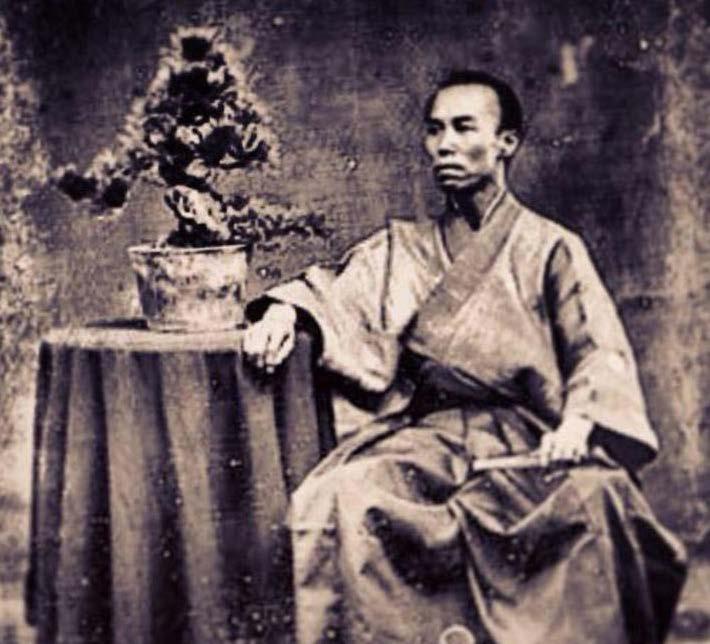
A samurai poses with his bonsai

An example of Chinese Penjing

A Courtesan stands with Bonsai
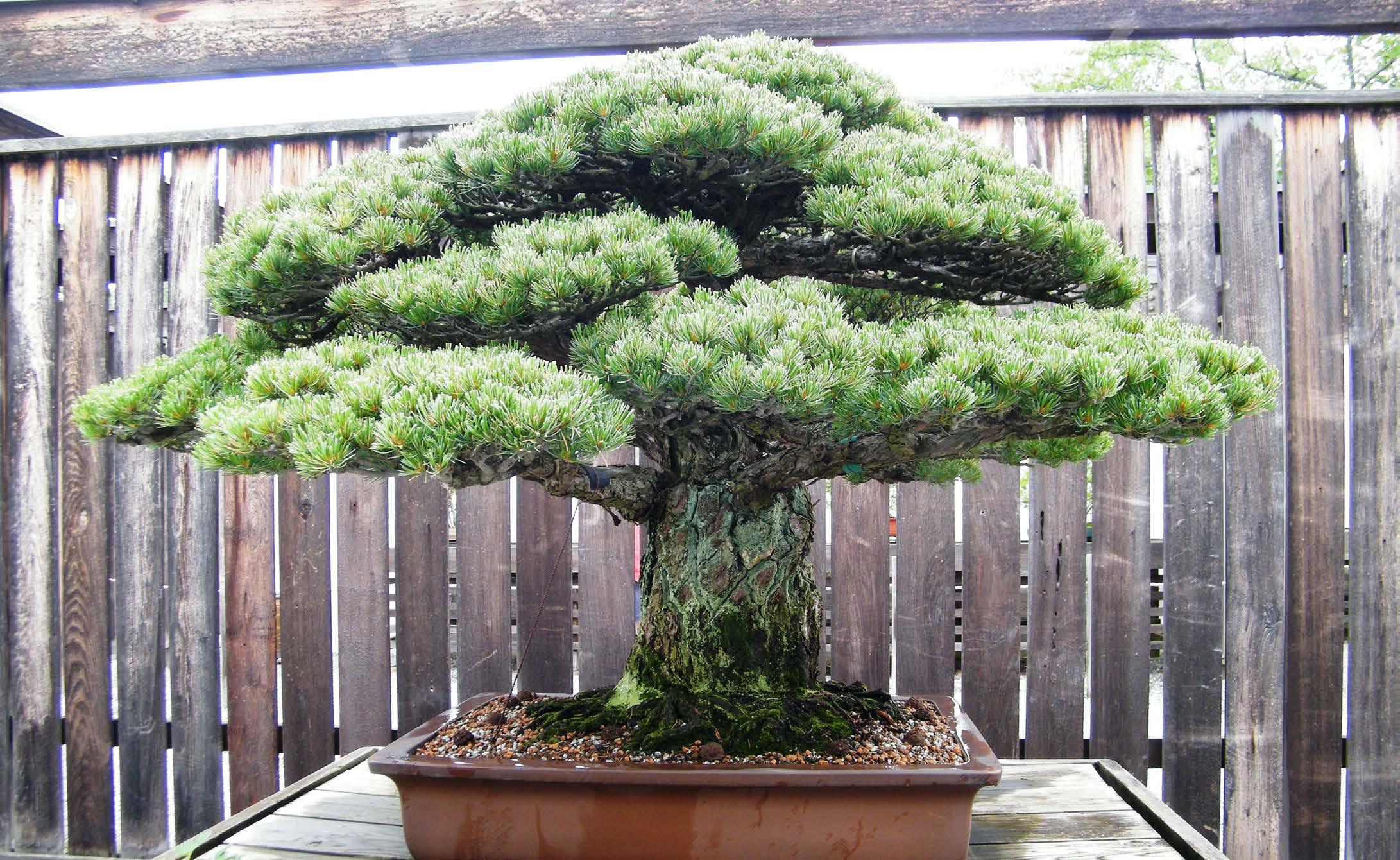
The Yamaki Pine
little of its early life. We do know, however, that it was kept in the family nursery just outside Hiroshima, and that the tree was quietly loved and cared for, centuries before the city would become synonymous with disaster.
A REMARKABLE SURVIVOR
At 8:15 am on August 6, 1945, the American B-29 bomber, Enola Gay, released the first atomic bomb ever used in war over Hiroshima. Just over 44-seconds later, a 16-Kiloton blast erupted just over the Shima Surgical Clinic. It incinerated everything within a one-mile radius and started fires across 4.4 square miles. It killed 70,000–80,000 people, or about 30% of the total population of Hiroshima, instantly and injured another 70,000.
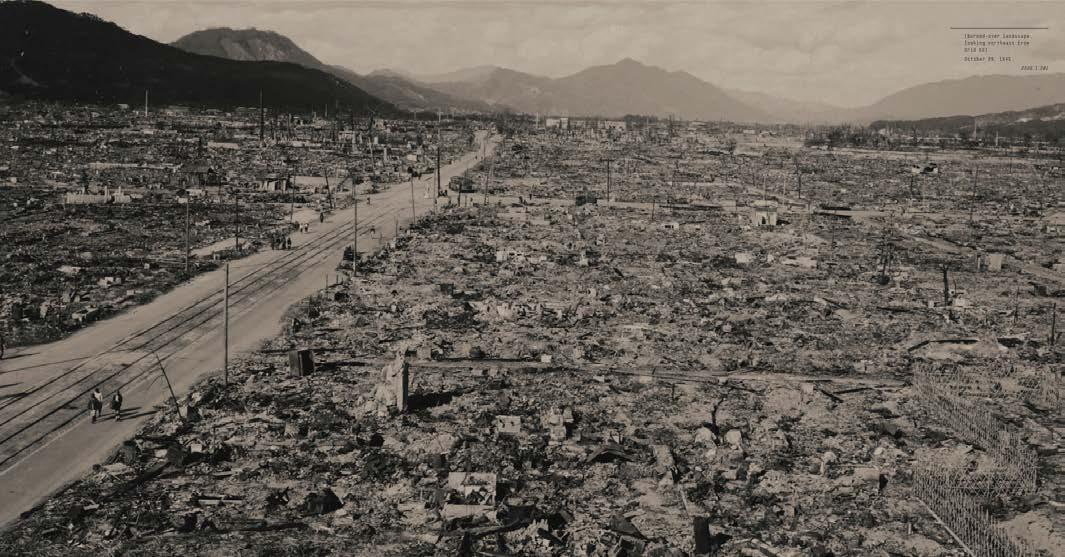
Total destruction - Hiroshima after the bomb
The total destruction stretched over an almost-unbelievable 4.7 square miles of completely leveled city, and the radiation and fallout would go on to kill thousands more in the years that followed. It was the single most terrible display of killing power the world would ever see — until the next bomb was dropped over Nagasaki three days later.
At the Yamaki nursery in Hiroshima, the blast blew out every window of the home and injured every family member — though they all miraculously survived without permanent injury. More impressive, the ancient white pine also survived, protected by a high brick wall around the nursery.
In the days and years that followed this horrific event, the city of Hiroshima slowly rebuilt. And the Yamaki family went back to doing what they had done for countless generations before growing and caring for their nursery filled with potted trees.
Thirty-one years later, in July of 1976, the United States celebrated the Bicentennial of its Declaration of Independence. This milestone event led to a shower of gifts from foreign nations. One under-theradar gift came the previous year from Japan: 53 bonsai trees from the Nippon Bonsai Association, including one incredible survivor with a hidden historical connection to the United States. They would be the start of the National Bonsai and Penjing Collection at the National Arboretum. But the new and fragile collection would need a curator — one with patience, focus, and great skill working with woody plants.
BONSAI BOB
Bob was happy in the lab at the Arboretum. He had quietly labored for 17 years researching crabapples, crepe myrtle, pyracantha, and other woody plants while assisting the famous horticulturalist Dr. Donald Egolf, a Rhodes Scholar in Horticultural Studies. Together, they were working on the development of superior new cultivars — the product of careful breeding and selection, when in 1975, word came to the Arboretum of the bonsai gift. Bob was in the right place at the right time, with right set of skills, and was quickly named as the first curator of the collection.
When the plants arrived later that year at Baltimore-Washington International Airport, they were offloaded and initially inspected. Then the cargo was immediately taken to the U.S. Department of Agriculture’s Plant Introduction Station in Glenn Dale, Maryland for a one-year quarantine while a suitable pavilion on the Arboretum grounds was built and Bob went about learning the finer points of bonsai care and cultivation.
While he was a respected horticulturist at the Arboretum, he had no experience with Bonsai, so he would have to learn on the fly. It was a big job, and he knew he would need help. So, he turned to volunteers from the local Potomac Bonsai Association. In particular, two ladies from the Association with years of invaluable bonsai experience stepped in to help him get up to speed: Ruth Lamanna and Janet Laman.
Lamanna was already caring for another state gift of bonsai: five immature bonsai plants that were given to President Nixon during his famous trip to China, which were housed in White House’s roof-top greenhouse. She immediately recommended a pavilion for the 53 new plants, which to her pleasant surprise was already being built at the National Arboretum.
Bob’s other mentor, Janet Laman, learned the art of bonsai in New York from Yuji Yoshimura, the foremost bonsai master in the United States (later, Yoshimura would see his name enshrined on the Yuji Yoshimura Educational Center at the National Arboretum though generous gifts from his family and friends). Fortuitously, Laman’s husband had recently been transferred to the Naval Medical Center in Bethesda, and she had already connected with Ruth Lamanna through mutual bonsai contacts.
Together, these ladies were instrumental in helping to set the early guidelines for the care and cultivation of the new collection. In fact, no one at the Arboretum had any of the specialized experience they did, and they generously gave of their time to teach and guide Bob and his staff of volunteers what they needed to know.
Then, in October of 1975, Emperor Hirohito and Empress Kōjun of Japan made a state visit to the White House, and one of Bob’s first official duties as Curator of the National Bonsai Collection was to deliver a tree to the private living quarters of President Gerald Ford’s White House. The tree he delivered came directly from the Emperor’s personal collection as part of the major gift from Japan,

Bob at work with his assistant curator
so it was thought he might fancy seeing the tree again when he visited the White House.
According to Bob, he waited at the door on the South Portico while he was told that security would be with him in a minute to inspect the pot and clear the tree for entrance. He only waited a few minutes when the White House gardener intervened and simply said, “Never mind this, let’s just take it upstairs.” (Security at the White House was different in those days…)
By 1977, Bob was firmly in control of the collection and the Director of the Arboretum, Dr. John Creech, sent him to Japan on a five-week mission to learn first-hand about how the Japanese practiced the art of bonsai. Bob traveled the country, visiting nurseries and meeting and learning from the greatest bonsai artists in the world while being treated as an important visiting dignitary. Dr. Creech had arranged much of this with the Japanese, knowing that Bob would never have sought any glory for his work on his own, even though he richly deserved it.
Caring for the collection wasn’t the only thing Bob did as curator. He also started to develop his own bonsai for the Arboretum. He soon found out just how difficult it was, and like all new bonsai masters, he experienced the high failure rate that comes with working with the fickle plants. Sometimes, he would care for a plant for years, only to see all his hard work dashed when it would die for some simple reason like being left without water for a day. But again, Bob’s careful dedication, patience, and perseverance took over as he learned from each failure and methodically improved his technique with each new effort.
Over the following years, Bob enjoyed great successes as the curator of this unique collection, and he became affectionately known as “Bonsai Bob” by his colleagues and friends as each year, the collection he managed and nurtured became more prestigious as it collected more donations and represented the work of more important growers in a steady upward trend.
Then, in 1996, after over 40-years of service to the Arboretum and his government, he retired to pursue, full-time, another of his lifelong activities: Freemasonry.
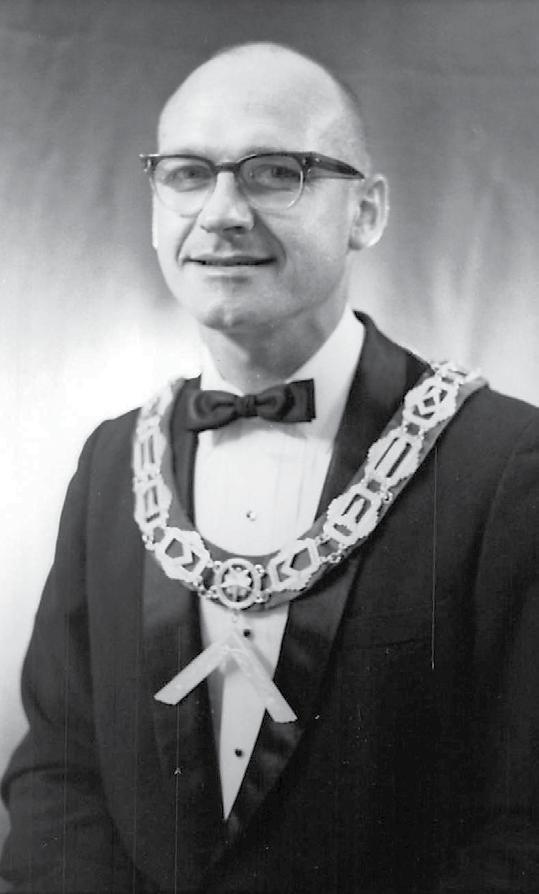
Worshipful Master of Anacostia Lodge, 1969

GM Visits Anacostia

President Ford and Emperor Horohito in Washington, 1975

GM Drechsler dedicates the memorial
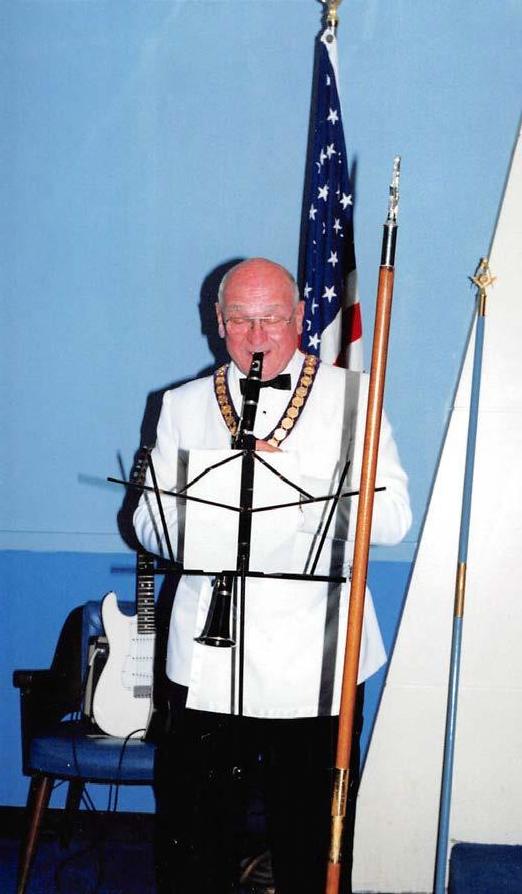
Playing clarinet in Lodge

Minor fame from the Washington Post

The opening of the North American Collection of Bonsai at the National Arboretum in 1990
THE GRAND MASTER
Most Worshipful Brother Robert Drechsler was installed as Grand Master of Masons in the District of Columbia on the evening of December 14,1996. It was the culmination of many years of dedicated, selfless work on his part that started when he was a DeMolay in Anacostia Chapter, where he served as that Chapter’s Master Councilor in 1953.
But interestingly, Bob never really thought about being Grand Master. In fact, he never asked to run for the Grand line. He was recruited by a few Past Grand Masters who asked if he would run, and his answer was always the same, “If someone wants to nominate me, I won’t say no.” He thought this would be an easy way out — someone would nominate him, and he’d lose. That would be the end of it.
Instead, he was nominated and then shocked when he was easily elected. For those that knew him, though, this was just a continuation of the theme Bob had developed through his life — he was a worker first, then a leader. Every organization he joined (and there are many of them), he was focused on working hard and leading by example. His friend Dutch Albert, the Worshipful Master of Anacostia Lodge in the year Bob was Grand Master, said at his testimonial banquet, “I could write a book [about Bob] and every page would be filled with gems of friendship and service to humanity, with his dedication to tasks as a volunteer and to those tasks assigned, with his grateful acceptance of the duties of the various offices he has held or holds, and with his loyalty to the brotherhood of man.”
Even looking back from that night in 1996, Freemasonry was much different when Bob was first the Master of Anacostia Lodge in 1969. That year was the Lodge’s 100-year anniversary and according to the roles, Anacostia had 1200 members, and the Grand Lodge had about 25,000. Plans were made months in advance for Lodge meetings and social events. Communication with the members was simple — a monthly bulletin arrived in members’ mailboxes like clockwork. On election night, the Lodge was filled with almost 100 men, and there were (friendly) competitive elections down the line. Ritual was learned, or men were dropped from line. The membership was so robust at Anacostia, they had a Lodge band. Of course, Bob played clarinet.
As Grand Master in 1997, MW Bro. Drechsler produced several highlights in a busy and active year. He convened the Grand Lodge on eight occasions that year, two of which were to consecrate new Lodges (Magnolia Lodge No. 53 and The Lodge of the Nine Muses No. 1776), and once to dedicate and consecrate the District of Columbia Obelisk in Valley Forge, Pennsylvania, a monument erected in honor of DC servicemen who had been awarded the Medal of Honor. He also sponsored three major charities, including a national Masonic effort to raise funds for the renovation of the Washington Monument, and he saw the 30 Lodges in DC combine to contribute $110,000 to various other charities in 1997. Under his direction, the Grand Lodge also developed a leadership training program for future Lodge Masters that still exists today.
GREAT HONOR(S)
Bushidō was a system of teachings not unlike Freemasonry — both focus on improvement of the individual for the good of the whole. They also both teach that man should strive for a certain spiritual understanding of his surroundings, and that death is inevitable, unpredictable, and blind to class, religion, or race. Therefore, man must live everyday as if it may be his last — conscious of doing the little things that mark his striving for perfection.
Bob Drechsler is a perfect example of both philosophies. His zealous attention to detail and the quiet responsibility that he shoulders made him a better man, but it made those around him (including some small, but very important trees) better in the process. It was Most Worshipful Brother Drechsler’s humility and dedication to hard work that made him a successful Grand Master and gave those around him such a positive and lasting impression of him.
It’s unsurprising then that today there aren’t many Masonic awards or titles that Bob doesn’t have. He’s in the DeMolay Legion of Honor, he has been awarded the Grand Cross Court of Honor in the Scottish Rite, and he is a recipient of the Grand Lodge of D.C.’s Distinguished Service Medal, just to name a few. True to himself, he’s proud of these awards, if a little embarrassed by the attention.
And Bob continues on. He has seen nearly everything in his time — presidents and curators that came and went, and Grand Masters that did the same. He, however, has stayed relatively the same, a servant of whatever interests him. Today he volunteers at the museum of the Grand Lodge of DC. It’s a part-time gig he squeezes in on Tuesdays and Thursdays, but like everything else in his life, he attacks the job with patience and focus, and there’s no doubt he’ll leave a positive and lasting impression on all those he encounters while he’s there.


